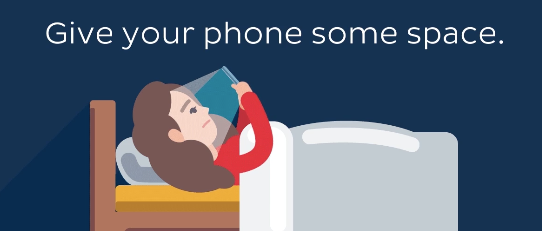How to Reduce Exposure to Radiofrequency Energy from Cell Phones
The use of cell phones has increased dramatically in recent years, including among children and young adults. These phones put out radio frequency (RF) energy.
Some scientists and public health officials believe RF energy may affect human health. This guidance document describes RF energy, lists some of the potential health concerns, and provides guidance on how people can reduce their exposure.
Why are people concerned about exposure to RF energy from cell phones?
Although the science is still evolving, some laboratory experiments and human health studies have suggested the possibility that long-term, high use of cell phones may be linked to certain types of cancer and other health effects, including:
-
brain cancer and tumors of the acoustic nerve (needed for hearing and maintaining balance) and salivary glands
-
lower sperm counts and inactive or less mobile sperm
-
headaches and effects on learning and memory, hearing, behavior, and sleep
These studies do not establish the link definitely, however, and scientists disagree about whether cell phones cause these health problems and how great the risks might be. This document is intended to provide guidance for those people who want to reduce their own and their families’ exposures to RF energy from cell phones, despite this uncertainty.
Cell phones work by sending and receiving signals to and from cell phone towers. These signals are a form of electromagnetic radiation called radiofrequency (RF) energy. Other sources of RF energy include cell phone towers, TV and radio transmitters, smart meters, and microwave ovens. When a phone sends signals to a tower, the RF energy goes from the phone’s antenna out in all directions, including into the head and body of the person using the phone. Cell phones also emit RF energy when using Wi-Fi and/or Bluetooth,but at lower levels.
RF energy is not as powerful or as damaging to cells or DNA as some other kinds of electromagnetic radiation, such as X-rays or UV rays from the sun. Some scientific studies have, however, suggested that there may be increased health risks from exposure to RF energy.
Keep your phone away from your body. Keeping your phone just a few feet away from you can make a big difference.
-
When you talk on your cell phone, avoid holding it to your head—use the speakerphone or a headset instead. Wireless (Bluetooth) and wired headsets emit much less RF energy than cell phones.
-
Send text messages instead of talking on the phone.
-
If you are streaming or if you are downloading or sending large files, try to keep the phone away from your head and body.
-
Carry your cell phone in a backpack, briefcase, or purse; NOT in a pocket, bra or belt holster. Because your phone’s antenna tries to stay connected with a cell tower whenever it’s on, it emits some RF energy even when you are not using it. It does not emit RF energy when it’s in airplane mode. (Airplane mode turns off cellular, Wi-Fi, andBluetooth.)
Reduce or avoid using your cell phone when it is sending out high levels of RF energy. This happens mainly when:
-
You see only one or two bars displayed. Cell phones put out more RF energy to connect with cell towers when the signal is weak. If you must use your phone when the signal is weak, try to follow the other guidance on thispage.
-
You are in a fast-moving car, bus, or train. Your phone puts out more RF energy to maintain connections to avoid dropping calls as it switches connections from one cell tower to the next unless it is in airplane mode.
-
You are streaming audio or video, or downloading
or sending large files. To watch movies or listento
playlists on your phone, download them first, then switch to airplane mode while you watch or listen.Don’t sleep with your phone in your bed or near your head. Unless the phone is off or in airplane mode, keep it at least a few feet away from your bed.
Take off the headset when you’re not on a call. Headsets release small amounts of RF energy even when you are not using your phone.
Children may be more at risk for harm from exposure to RF energy because:
RF energy can reach a larger area of a child’s brain andbody grow and develop through the teen years. During this time, the body may be more easily affected by RFenergy and the effect may be more harm-
- A child who uses a cell phone will have many more years of exposure to RF energy in his or her lifetime than someone who started using a cell phone as an adult.
- There is not a lot of research about the effects of cell phone RF energy on children or teenagers, but a few studies have shown that there may be hearing loss or ringing in the ears, headaches, and decreased general well-being.
- Don’t rely on a “radiation shield” or other products claiming to block RF energy, electromagnetic fields, or radiation from cell phones. According to the U.S. Federal Trade Commission, products that interfere with the phone’s signal may force it to work harder and emit more RF energy in order to stay connected, possibly increasing your exposure.
U.S. Centers for Disease Control and Prevention:
U.S. Federal Communications Commission (FCC):
• RF Safety FAQ (The FCC is responsible for regulating RF emissions from cell phones; the regulations were last updated in 1996.)
U.S Federal Trade Commission (FTC):
World Health Organization:
• Electromagnetic fields and public health: mobile phones
American Academy of Pediatrics
• Cell Phone Radiation & Children’s Health: What Parents Need to Know
Consumer Reports:





















